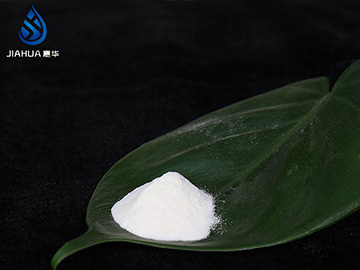Factors affecting the transparency and viscosity of HPMC
JiaHua Cellulose can provide answers to the following factors that affect the light transmission of hydroxypropyl methyl cellulose.
JiaHua Cellulose can provide answers to the following factors that affect the light transmission of Please contact LISTAL.
1. The quality of raw materials.
2. Alkalization effect.
3. Process ratio.
4. The ratio of solvent.
5. Neutralization effect.
In order to solve these problems, we must adjust the following points. Sometimes acetic acid can seriously affect the transmittance. It is better to use acetic acid after dilution. The biggest influence is whether the reaction is stirred well and the system ratio is stable (some materials have unstable water content, such as recovered solvents). In fact, many factors are influencing it. If the equipment is stable and the operators are well trained, the production should be very stable. The light transmission is not more than ±2% of the range, and the substitution uniformity of the substituent groups must be controlled. Rather than uniformity, the light transmission should be just right.

Factors affecting the viscosity of hydroxypropyl methylcellulose.
The high viscosity of hydroxypropyl methylcellulose cannot be produced by vacuuming and nitrogen replacement alone. It is generally not possible to control the production of high viscosity cellulose in this country. However, if a micro-oxygen meter can be installed in the kettle, it is possible to artificially control the production of its viscosity. In addition, it is easy to produce high viscosity products by virtue of the gas tightness of the system, considering the rate of nitrogen replacement.
Of course, the degree of polymerization of the refined cotton is also critical. If it still doesn't work, then hydrophobic joining is used to make it. There is an association agent for this in China. The choice of the joining agent has a great influence on the performance of the final product. Residual oxygen in the reactor leads to cellulose degradation and molecular weight reduction. However, the amount of residual oxygen is limited. It is not difficult to create high viscosity as long as the broken molecules are reconnected.
The water retention of hydroxypropyl methyl cellulose is very much related to the hydroxypropoxy content, but some factories just want to reduce the cost and price and are satisfied with the hydroxypropoxy content, so the quality is not up to the same grade of foreign products. Grade. the water retention of HPMC cellulose ether is closely related to hydroxypropoxy, but for the whole reaction process, it also determines the water retention, alkali effect, the ratio of chloromethane to propylene oxide, the concentration of alkali and the ratio of water to refined cotton determines the performance of the product.
